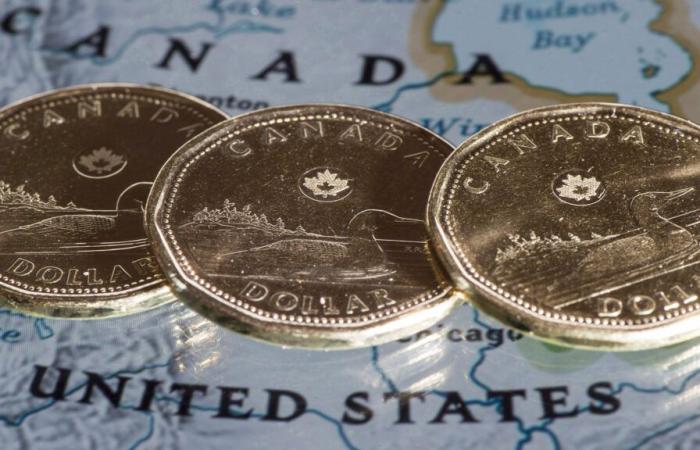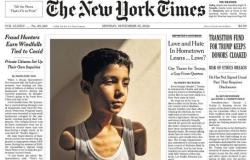The threat of tariffs further weighed on the loonie, which has been falling against the US dollar since September.
The loonie was at 71.01 US cents early in the afternoon after falling below 71 US cents earlier in the day.
BMO Capital Markets senior economist Robert Kavcic called the prospect of tariffs a pretty strong headwind for a currency already under pressure from domestic economic factors.
He noted that the Canadian dollar is weakening due to the weaker economy and recent interest rate cuts by the Bank of Canada.
The central bank has cut its benchmark rate four times this year, including a half-percentage-point cut in October to 3.75%, and its concerns have shifted from the need to calm inflation to the importance of stronger economic growth.
Donald Trump argued on the Truth Social network on Monday that he would impose a 25% tariff on all products from Canada and Mexico. He said the tariff would remain in place until both countries prevent drugs, particularly fentanyl, and people from crossing borders illegally.
However, Donald Trump’s executive order on social media is not yet US government policy and, even if it comes to fruition, it may only be temporary, as the president-elect has linked it to conditions regarding border.
Karl Schamotta, chief market strategist at Corpay, noted that investors do not expect Donald Trump to follow through on the measure.
“Canadian Prime Minister (Justin) Trudeau has already shown signs of capitulation to Trump’s demands, and the president-elect’s history suggests that last night’s message (Monday) simply represented a ruse in the negotiating process” , he wrote in a note to his clients.
“The Canadian dollar appears poised for a slight upward reversal once traders assess the situation from a more nuanced perspective,” he added.
While a weaker loonie increases costs for Canadians who want to shop cross-border this week on Black Friday, it also makes Canadian products cheaper for shoppers with U.S. dollars, partly offsetting shipping costs. possible customs tariffs for Americans.
Tariffs may also include exceptions for specific industries such as oil and gas as well as the automotive sector, which sees parts travel across the border and back before final assembly into a car or truck.
“This makes no sense for the energy sector because it does not have the capacity to easily replace three million barrels per day of production,” Kavcic said. And then there are other areas like automobiles where the industry is so integrated.”






